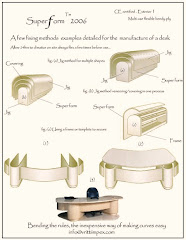

We could hardly miss this well known vessel while we were in the naval dockyard at Portsmouth,what was not known was one of the worlds greatest cast Iorn engineers in the world designed her,his name was Isambard Kingdom Brunel,he made sure she was bomb proof by making her hull 4.5" thick,that 114mm,imagine the weight.
Note,he also designed the Great Britain and the Clifton Suspension bridge down in Bristol.
HMS Warrior built 1860 was the world's first iron-hulled armoured battleship.
She was built for the Royal Navy in response to the first ironclad warship, the French battleship La Gloire launched in 1859.
When first launched, the 4.5 inch thick wrought iron armoured belt meant that she could withstand all naval cannon in service at that time, she was regarded as the most powerful warship in the world.
The rapid advances in technology at that time resulted in HMS Warrior becoming obsolete within ten years. In 1875 she was relegated to the Reserve Fleet ranks her guns and upper masts were removed around this time. HMS Warrior was saved from being scrapped by the work of the Maritime Trust.They recognized the ship as one of the Royal Navy's most historically important warships.
Restoration of HMS Warrior for use as a museum ship began in August 1979 and by mid-1987, after years of hard work the restoration was completed, on June 16th 1987 she was moved to her current berth in Portsmouth.Visitors can view all aspects of life on board, beautifully recreated as it would of have been, there are countless artifacts on board, such as cannon and naval equipment of the day. The officers quarters hold some very fine furniture, you can also visit the quarter masters store and the engine rooms.
Portsmouth Historic Dockyard
Visitor Centre
Victory Gate
HM Naval Base
Portsmouth
Hampshire
PO1 3LJ

Home for 50 years. Llanion Cove on the Cleddau River, Wales.

Thats Warrior rafted up with other Royal Navy warships,you can see this was a very long time ago.


History
Warrior began active service most inauspiciously. She froze to the slipway when she was launched on December 29th 1860 during the coldest winter for 50 years. Frozen snow covered the dockyard and Thames braziers blazed down the ship's sides but when Sir John Pakington, First Lord of the Admiralty, came to do the honours, she refused to budge.
Extra tugs and hydraulic rams pulled her while hundreds of men ran from side to side on her upper deck, trying to rock her free. After 20 minutes, she finally gave way. Sir John smashed a bottle of wine over her bow with the words "God speed the Warrior"
Warrior later in her career
Warrior was obsolete within a decade. She was relegated to the Reserve Fleet ranks and in 1883, withdrawn from sea service. She was now little more than a floating hulk, although still officially classed an armoured cruiser.
Her masts and guns were stripped when she was used as a depot ship for two years. Her name became Vernon III in 1904, when she joined Portsmouth-based HMS Vernon, the Navy's torpedo training school. Her role was supplying steam and electricity to neighbouring hulks. A year later, another armoured cruiser called Warrior was launched.
The Hon Arthur Cochrane, son of the Earl of Dundonald, became her captain after her commission on August 1st 1861. The ship underwent minor modifications after a sea trial. In June 1862, she started active service in the Channel Squadron, patrolling coastal waters and sailing to Lisbon and Gibraltar.
Crowds of up to 6,000 people turned out to see the new supership as she visited British ports. She never once fired a shot in anger. Her strength was her ability to keep the peace.
Foreign navies soon imitated her advanced features, and armour-plated lookalikes with even greater firepower rolled down dockyard slipways. Engine designs improved steadily, with coaling stations springing up in ports all over the world.
Warrior, second from left, during the early part of the Twentieth Century
Nobody wanted the old battleship when she went up for sale in 1924. Five years on, she inherited the name Oil Fuel Hulk C77 when starting life as a shipkeeper's home and floating oil jetty at Pembroke Dock in Wales.
Some 5,000 ships refuelled alongside her in her 50 years at Pembroke. However, the Royal Navy kept her in reasonable condition with occasional maintenance trips into dry dock keping her hull intact. Warrior was the only example of the 45 ironhulls built between 1861 and 1877 to survive.




No comments:
Post a Comment